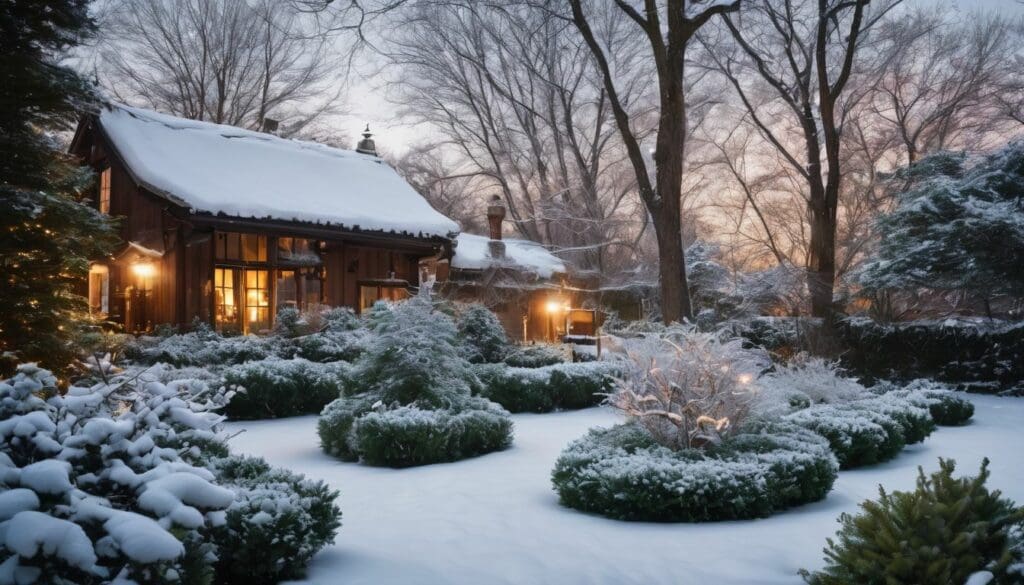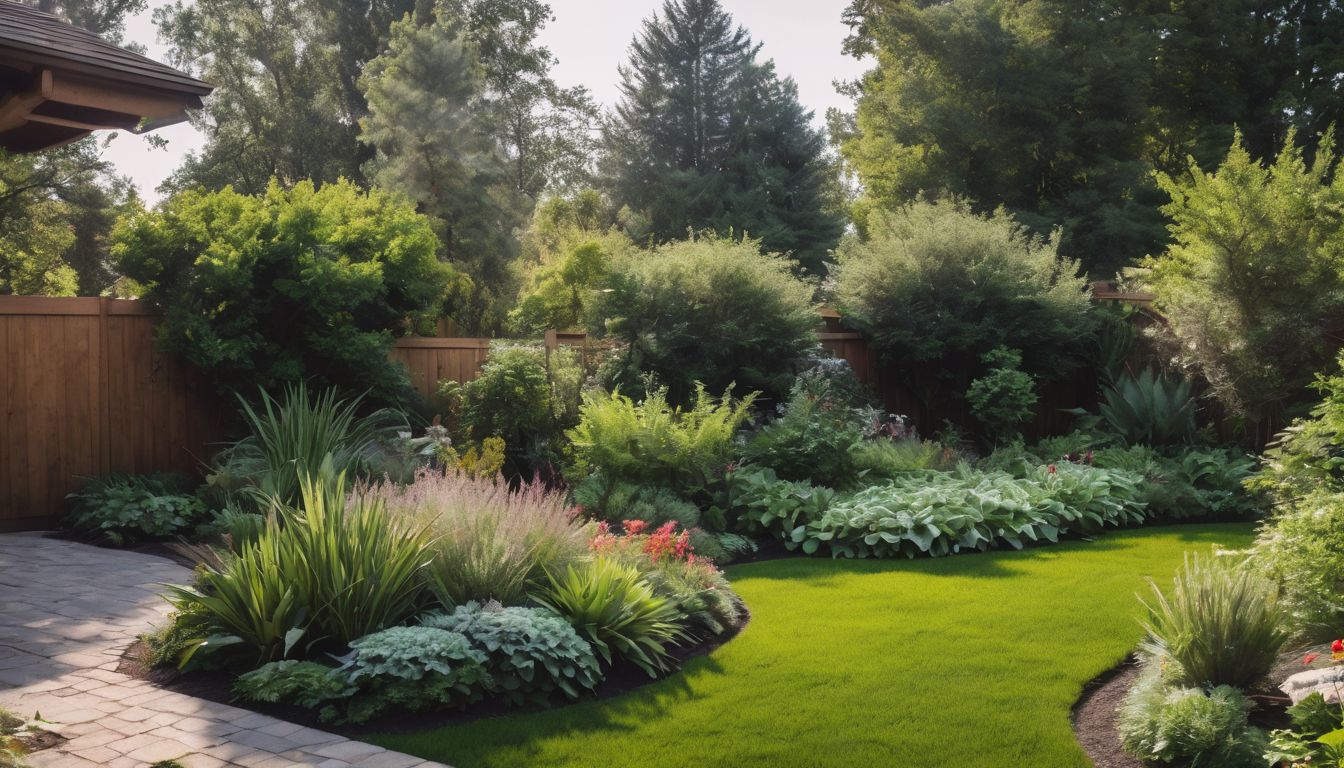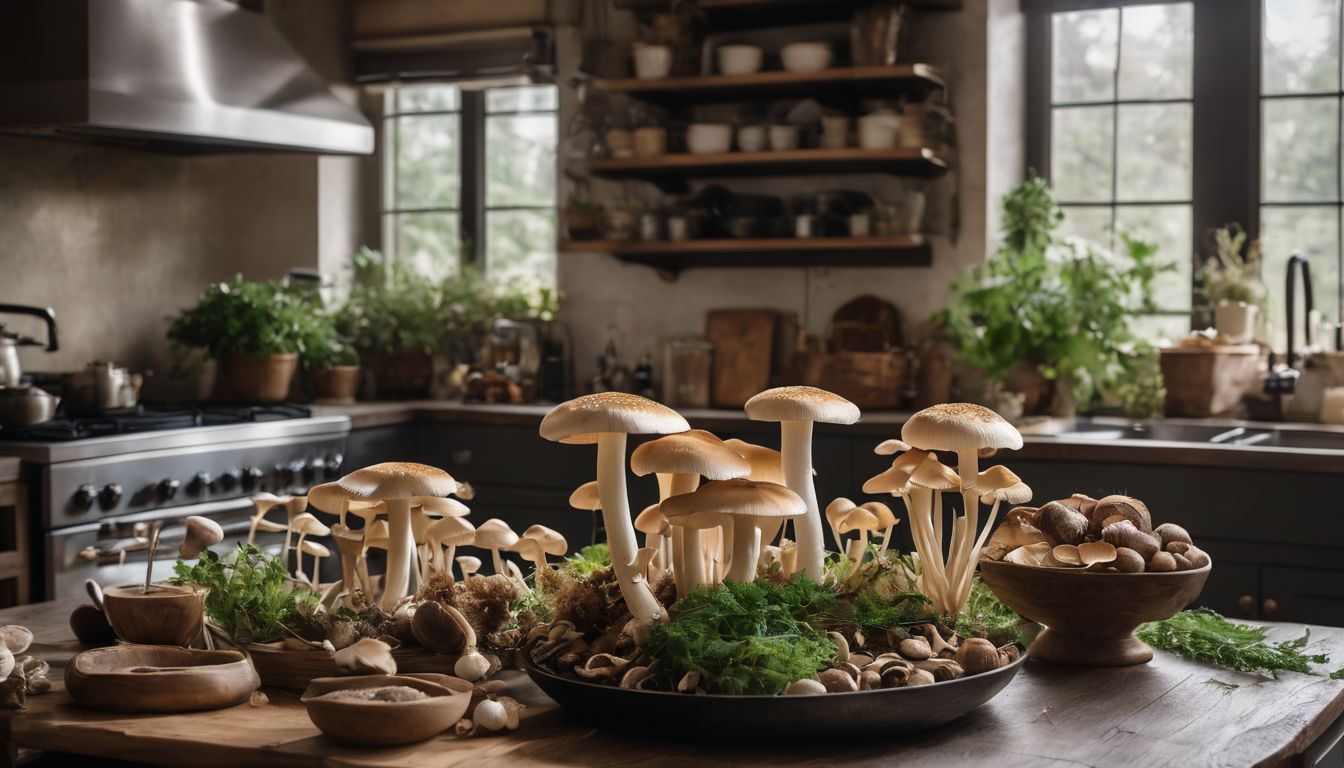As the frost sets in, many gardeners wonder if their green thumbs must hibernate too. But did you know that with the right techniques, winter can be a flourishing season for your garden? This article is packed with essential tips and tricks to help you cultivate a vibrant winter haven right in your backyard.
Dive in and let’s get those plants thriving despite the chill!
Key Takeaways
- Mulch your garden to insulate soil, retain moisture, and suppress weeds, using materials like straw or leaf mould which enrich the soil as they decompose.
- Prune trees and shrubs in winter to remove dead branches and promote healthy growth but avoid pruning early bloomers too soon as it may affect their spring blossoms.
- Use structures such as cold frames, row covers, and mini hoop houses to protect plants from frost and extend the growing season despite low temperatures.
- Choose hardy plants that can withstand cold weather for your winter garden including vegetables like kale and herbs that can be grown indoors on windowsills.
- Avoid overwatering to prevent root rot; ensure your soil has good drainage by incorporating organic matter or creating raised beds.
Benefits of Winter Gardening
Winter gardening offers numerous benefits, including the ability to continue planting with proper mulching, improving soil health, increasing resilience of plants, and saving money on groceries.
Continue planting with proper mulching
Keep your green fingers busy by continuing to plant even as temperatures drop. Use mulch to insulate the soil, keeping it warmer and more hospitable for new plants. This layer also helps retain moisture, cut down on water use, and suppresses weeds that compete with young seedlings.
Choose straw, bark chips or leaf mould as your mulching material for guarding against frost while adding organic matter back into the earth. Proper application ensures that your winter gardening efforts contribute positively to conservation by enhancing soil structure and fertility over time.
Improves soil health
Improving soil health is a key benefit of winter gardening. By planting cover crops and incorporating organic matter like compost, you can enhance soil structure and fertility. These practices can also help to prevent erosion and promote beneficial microbial activity in the soil, creating a healthy foundation for your garden’s ecosystem.
Adding mulch in winter helps retain moisture, suppresses weeds, and gradually breaks down to enrich the soil with essential nutrients. This natural process improves water retention while reducing the need for synthetic fertilisers or chemical treatments, promoting sustainable gardening practices that benefit both your plants and the environment.
Increases resilience of plants
To ensure plants can withstand the challenges of winter, focus on increasing their resilience. Hardening off young plants by gradually introducing them to outdoor conditions helps toughen them up.
Providing adequate nutrients and maintaining soil moisture levels also aids in building plant strength. Additionally, choosing cold-hardy varieties and implementing proper care techniques will help plants better endure the harsh winter weather.
Optimising plant resilience contributes to a thriving winter garden while aligning with environmental values and conservation efforts. By prioritising resilient plant species that can withstand the rigours of colder seasons, one can reduce the need for excessive protection measures and resources while cultivating a strong, sustainable garden ecosystem.
Saves money on groceries
By growing your own produce in the winter, you can significantly reduce your grocery bill. Hardy vegetables like kale, spinach, and carrots can thrive even in colder temperatures, providing a fresh and cost-effective alternative to buying from the store.
Utilising indoor gardening techniques allows for year-round herb cultivation, saving money on expensive store-bought herbs while reducing the environmental impact of transporting goods.
Additionally, by taking advantage of microclimates and utilising structures like cold frames and row covers to protect delicate plants from harsh winter conditions, you ensure an abundant supply of fresh produce without emptying your wallet.
Winter Garden Dos
Add compost and mulch to improve soil health, and prune trees and shrubs for optimal growth during the winter months. Want to learn more about maintaining a thriving winter garden? Keep reading for valuable tips and tricks!
Add compost and mulch
Boost your winter garden’s health by incorporating compost and mulch.
- Introduce organic matter such as kitchen scraps, leaves, and garden waste into a compost bin.
- Blend the compost into the soil to enrich it with vital nutrients for your plants.
- Apply a layer of mulch on top of the soil to retain moisture, suppress weeds, and regulate temperature.
- Utilise materials like wood chips, straw, or shredded leaves for effective mulching.
- Replenish mulch periodically to maintain its benefits throughout the winter season.
- Compost and mulch work together to enhance soil fertility and plant growth in your winter garden.
Prune trees and shrubs
- Remove dead or diseased branches to prevent the spread of infection and encourage healthy growth.
- Cut back overgrown branches to maintain a balanced shape and improve air circulation within the plant’s canopy.
- Trim any crossing or rubbing branches to prevent damage and promote even growth.
- Avoid heavy pruning of early bloomers, as this can reduce the number of flowers in spring.
- Use clean, sharp tools to make precise cuts and minimise stress on the plants.
Winter Garden Don’ts
Avoid very wet soils as they can lead to root rot and other diseases, and refrain from pruning early bloomers as it may affect their growth in the spring. To find out more about winter gardening dos and don’ts, keep reading!
Avoid very wet soils
Winter gardening involves careful consideration of soil conditions. To ensure successful winter plant care, it’s crucial to steer clear of overly wet soils. When the ground becomes waterlogged, it could lead to root rot and other issues that threaten the health of your plants.
Opt instead for well-draining soil or amend your existing soil with organic matter to improve its drainage capabilities, ensuring ideal growing conditions for your winter garden.
Furthermore, excessively wet soils can make it difficult for beneficial organisms like earthworms to thrive and do their part in maintaining healthy soil structure. By avoiding very wet soils, you create an environment where these beneficial creatures can work their magic underground, contributing to improved soil health and nutrient availability for your winter garden plants.
Prune early bloomers
To maintain a healthy and vibrant garden during the colder months, it’s essential to prune early bloomers in late winter or early spring. Pruning these plants helps promote new growth and flowering, allowing them to flourish when the warmer weather arrives.
It also prevents overcrowding and encourages better air circulation, reducing the risk of diseases. Additionally, pruning early bloomers can help shape the plant for a more aesthetically pleasing appearance.
By pruning early bloomers at this time, you help ensure that energy is directed towards the development of strong branches and roots, setting the stage for healthier growth as temperatures rise.
Tips and Tricks for Winter Gardening
Utilise structures like cold frames, row covers, and mini hoop houses to protect your plants from the harsh winter weather, leverage microclimates in your garden, choose hardy plants and consider indoor gardening for a successful winter garden.
Ready to learn more about creating a gorgeous winter garden? Keep reading for expert tips and tricks!
Utilise structures like cold frames, row covers, and mini hoop houses
To protect your winter garden, you can use structures such as cold frames, row covers, and mini hoop houses. These structures act as barriers against harsh weather, providing a shield for your plants.
- Cold frames: These are low, enclosed structures with transparent tops that capture sunlight to create a greenhouse effect. They help to regulate temperature and protect delicate plants from frost.
- Row covers: These lightweight fabrics can be draped over rows of plants to provide insulation and protection from freezing temperatures, wind, and pests while allowing sunlight, air, and moisture to reach the plants.
- Mini hoop houses: These are small tunnel-like structures made of flexible materials such as PVC pipes or metal hoops covered with plastic sheeting. They create a warm microclimate for your plants by trapping heat from the sun during the day and retaining it at night.
Leverage microclimates
Take advantage of microclimates in your garden to create optimal growing conditions for different plants. By understanding the unique climate variations within your garden, you can strategically place plants according to their specific temperature and moisture needs.
This may involve locating warmer spots against a sunny wall or using windbreaks to shield delicate plants from harsh winter winds. Additionally, consider utilising raised beds or planting near large rocks or bodies of water that can absorb and radiate heat, creating small pockets of warmth within your garden.
By leveraging microclimates, you can extend the growing season for certain plants and maximise their chances of thriving even during colder months. Paying attention to these subtle environmental differences will enable you to create a more resilient and productive winter garden while conserving resources and promoting sustainable gardening practices.
Choose hardy plants and utilise indoor gardening
To ensure a successful winter garden, it’s important to select hardy plants that can withstand the cold weather and also consider indoor gardening as an option. Consider the following tips:
- Opt for cold – hardy vegetables such as kale, carrots, and Brussels sprouts which can thrive in colder temperatures and even tolerate light frost.
- Explore indoor gardening by growing herbs such as rosemary, thyme, and mint on sunny windowsills or under grow lights.
- Incorporate resilient perennial plants like coneflowers, sedum, and ornamental grasses into your garden to add visual appeal even during the winter.
- Experiment with microgreens indoors, providing a fresh addition to your meals while offering a small-scale indoor gardening experience.
- Embrace container gardening for versatile options that can be easily brought indoors when the temperature becomes too severe.
- Consider starting seeds indoors for early spring planting to get a head start on the growing season without having to contend with harsh winter conditions outdoors.
Final Thoughts
To maximise winter gardening success, consider utilising structures like cold frames, row covers, and mini hoop houses. Leverage microclimates to create optimal growing conditions for your plants.
Choose hardy plant varieties and consider indoor gardening to extend your growing season. With these tips and tricks, you can enjoy a thriving garden even during the colder months.
Conclusion
In conclusion, winter gardening offers many benefits for both the environment and your garden. By following the dos and don’ts, you can ensure that your plants stay healthy and strong throughout the colder months.
Utilising tips and tricks such as leveraging microclimates or using cold frames will help you make the most of your winter garden. With these techniques in mind, you can keep your green thumb active all year round.
FAQs
1. How do I start gardening in winter?
Winter gardening starts with cold-weather planning, where you prepare your garden for chilly days and choose plants that can grow well indoors or withstand the frost.
2. What are some dead-simple winter garden tips I should know?
For a thriving winter garden, use seasonal gardening techniques like frost protection and learn to maintain your garden even when it’s cold outside.
3. Can I still grow vegetables in the winter?
Yes, growing vegetables in the winter is possible; just pick the right veggies suited for cold weather and try indoor methods if it’s too frosty outside.
4. What should I be doing now to get my garden ready for colder weather?
Preparing your garden for winter involves clearing away dead plants, adding mulch for insulation, and ensuring robust protection against freezing temperatures.
5. Are there any flowers that will bloom during wintertime?
Certainly! Winter flowering plants like pansies can bring vibrant colours to your otherwise dormant winter landscape.





